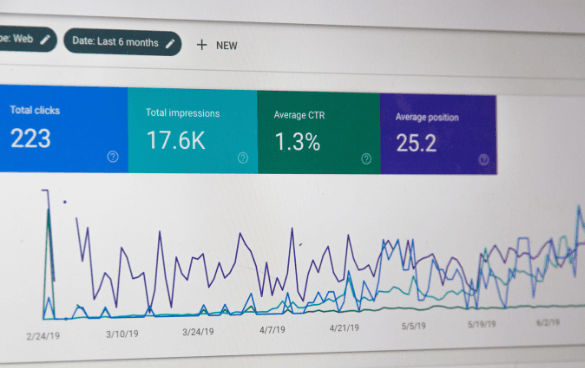Comprehending the Power of Remarketing In Google Analytics
Comprehending the Power of Remarketing In Google Analytics
Blog Article
Taking Advantage Of Remarketing in Google Analytics: A Comprehensive Overview
Taking advantage of remarketing in Google Analytics uses services a tactical side in reaching out to potential consumers. This guide will lose light on the essential steps involved in harnessing the complete potential of remarketing in Google Analytics, leading to enhanced advertising end results.
Understanding Remarketing in Google Analytics
Remarketing in Google Analytics enables companies to purposefully target users who have actually previously interacted with their site or mobile app. By leveraging data from Google Analytics, businesses can produce tailored remarketing lists based on user actions, such as pages visited, actions taken, or certain objectives accomplished. This powerful device makes it possible for organizations to re-engage with users that have actually revealed passion in their services or products, eventually increasing the chance of conversion.
Recognizing the various kinds of remarketing methods is crucial for a successful campaign - What Is “Remarketing” In Google Analytics?. Google Analytics provides numerous alternatives, consisting of basic remarketing, vibrant remarketing, and remarketing checklists for search ads (RLSA) Each type offers a special purpose and can be tailored to fulfill certain advertising and marketing goals
Moreover, assessing the performance of remarketing campaigns is vital for enhancing outcomes. Google Analytics supplies beneficial understandings right into the effectiveness of various remarketing approaches, permitting organizations to make data-driven choices and fine-tune their targeting approach. By continually checking and adjusting remarketing efforts based on analytics data, businesses can make the most of ROI and drive success in their advertising and marketing efforts.
Establishing Remarketing Projects

After establishing target market checklists, the next step is to connect Google Analytics with Google Advertisements. By linking these 2 platforms, companies can seamlessly transfer audience listings from Google Analytics to Google Advertisements for remarketing purposes. This integration allows for even more precise targeting and far better campaign performance.
Once the accounts are connected, services can produce remarketing campaigns in Google Advertisements using the audience details previously specified in Google Analytics. These campaigns can be customized with details ad creatives, messaging, and bidding process approaches to properly re-engage with past site visitors and drive conversions. By following these steps, businesses can take advantage of the power of remarketing to boost their advertising and marketing efforts and raise ROI.
Making Use Of Target Market Division Approaches

Predefined sectors in Google Analytics allow you to quickly assess typical target market groups like brand-new customers, returning customers, or users who finished a certain goal on your web site. Personalized sectors, on the various other hand, allow you to develop distinct sectors based upon particular criteria that are necessary to your organization purposes. Dynamic remarketing checklists instantly readjust based on user behavior, revealing individualized advertisements to customers who have engaged with your website in particular methods.
Studying Remarketing Efficiency Metrics
Upon assessing why not try here the performance of remarketing projects in Google Analytics, the analysis of crucial performance metrics provides valuable understandings into audience engagement and conversion rates. By diving right into metrics such as click-through rates (CTR), conversion rates, expense per purchase (CERTIFIED PUBLIC ACCOUNTANT), and return on advertisement spend (ROAS), marketers can determine the success of their remarketing initiatives. CTR suggests the percentage of users that clicked the advertisement after watching it, showing the advertisement's relevance and appeal. Conversion rates determine the portion of users who finished a desired activity, such as buying, after clicking the advertisement. Certified public accountant discloses the ordinary price incurred for each and every conversion, helping evaluate project earnings. ROAS, on the various other hand, evaluates the profits produced for every dollar invested on advertising and marketing. Assessing these metrics allows online marketers to enhance projects, fine-tune target market targeting, and allot budget plans properly to improve overall remarketing efficiency.
Enhancing Remarketing Methods
When refining remarketing approaches in Google Analytics, concentrating on target market segmentation is critical for accomplishing campaign success. By dividing your target market into specific sectors other based on their behavior, demographics, or rate of interests, you can tailor your advertisements more effectively per team. This targeted method boosts discover this the likelihood of involving individuals who have actually already revealed interest in your service or products, bring about greater conversion rates.
Another vital facet of maximizing remarketing techniques is constantly testing and refining your campaigns (What Is “Remarketing” In Google Analytics?). A/B testing different ad creatives, messaging, or offers can assist you recognize what reverberates ideal with your target market and drives one of the most conversions. By evaluating the performance of these tests in Google Analytics, you can make data-driven choices to maximize your remarketing efforts further
Furthermore, leveraging vibrant remarketing can dramatically boost your project results. This function enables you to show tailored advertisements to individuals based on their previous communications with your web site, showcasing services or products they have actually previously seen. By supplying customized material to individuals based upon their habits and interests, vibrant remarketing can help boost interaction and drive conversions.
Final Thought
Finally, taking advantage of remarketing in Google Analytics is a critical technique to target users that have formerly engaged with an internet site. By producing customized target market listings and utilizing target market segmentation techniques, organizations can maximize remarketing campaigns for boosted conversion rates. Evaluating efficiency metrics and continuously enhancing approaches are critical for maximizing the efficiency of remarketing initiatives.
Google Analytics offers numerous options, consisting of basic remarketing, dynamic remarketing, and remarketing listings for search advertisements (RLSA)After setting up target market listings, the next action is to link Google Analytics with Google Ads. By linking these two systems, businesses can seamlessly move target market checklists from Google Analytics to Google Ads for remarketing objectives.When the accounts are connected, companies can develop remarketing projects in Google Advertisements using the target market details previously specified in Google Analytics.When refining remarketing methods in Google Analytics, concentrating on audience division is critical for attaining project success.
Report this page